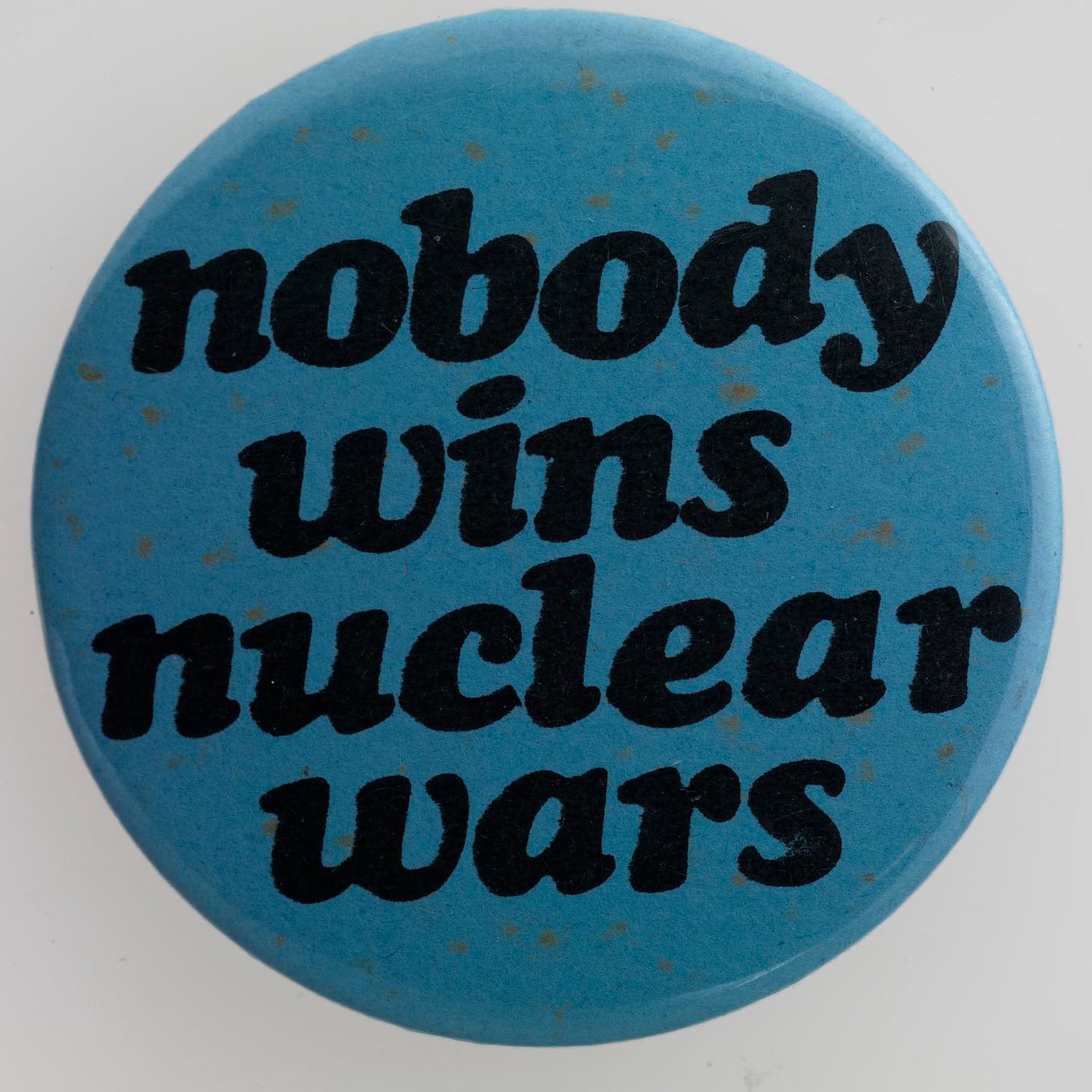Reintroducing Strike!: Solidarity and Survival
This is a reposting of the first, introductory commentary of “Strike!: Commentaries on Solidarity and Survival.” It asks, is there any way we can deliver ourselves from mutual destruction by climate change and/or nuclear holocaust? An archive of Strike! commentaries is here.
You and I may not know each other, but I suspect there are some problems that we share — problems like climate change, war, and injustice, and maybe more mundane problems like how to make a living in a world where wealth is more and more concentrated in the hands of a tiny minority. Strike!: Jeremy Brecher’s Corner presents my search for solutions.
As a child I discovered that the world was full of problems that affected my life. In my family’s pantry there hung a poster headed “What to Do in the Event of Nuclear Attack,” and I became aware at an early age that I and the rest of the world might be destroyed in a nuclear conflagration. At school in the early 1950s we had air raid drills. Sirens would sound and we would “duck and cover” under our desks. There were plenty of jokes among the kids about our instructions: “In the event of nuclear attack bend over, put your head between your legs, and kiss your ass goodbye.”
Today we continue to live on the cusp of mutual destruction. The greenhouse gas (GHS) we pour into the atmosphere is making the earth less and less livable. The struggle among nations to dominate and exploit leads to unending war which at any point could tip over into nuclear holocaust. The quest for political domination generates endless efforts to divide and thereby rule the variety of ethnic, racial, religious, gender, national, and other human groups. Greed and the unlimited drive to accumulate wealth intensify the haves’ exploitation of the have-nots.

In 1953 – about the time I was learning to duck-and-cover under my school desk – the Doomsday Clock, which measures the world’s vulnerability to catastrophe from nuclear weapons and other threats, was set at two minutes to midnight. By 1991, amidst the nuclear test ban treaty and the strategic arms limitation agreement, it had been set back to 17 minutes to midnight. In January 2020 it was just advanced to 100 seconds to midnight – the closest to midnight it has ever been.
The statement explaining the setting of the Doomsday Clock for 2020 warns, “Humanity continues to face two simultaneous existential dangers—nuclear war and climate change.” Civilization-ending nuclear war is “a genuine possibility.” Climate change that could devastate the planet is “undeniably happening.” Institutions that should be working to address these threats have “failed to rise to the challenge.” [1]
There is no solution to these problems for individuals and limited social groups. They can only be solved through new forms of cooperation. The only way to halt mutual destruction is what I call “common preservation” – action through which we pursue our own interest and survival by providing for each other’s.

But are shifts to common preservation possible? Consider the cold-war era movement against nuclear weapons and nuclear testing. The “ban-the-bomb” peace movement of the 1950s and 1960s was often seen – even by its participants – as a forlorn and hopeless struggle against mutual destruction. It is often thought to have had no effect on history. The détente in the cold war, the nuclear test ban treaty, and the 80% reduction in strategic missiles are more often attributed to Ronald Reagan than to the peace movement. Historian Lawrence Wittner once shared the assumption that the peace movement had been ineffectual — but he changed his mind when he began reading the secret documents in the archives of the cold-war governments. In his magisterial three-volume history, The Struggle Against the Bomb, Wittner shows that “Most government officials — and particularly those of the major powers — had no intention of adopting nuclear arms control and disarmament policies. Instead, they grudgingly accepted such policies thanks to the emergence of popular pressure.” Confronted by “a vast wave of popular resistance” they concluded, reluctantly, that “compromise had become the price of political survival.” Consequently “they began to adapt their rhetoric and policies to the movement’s program.”[2]
Shifts from mutual destruction to common preservation may seem far-fetched, and indeed they are far from inevitable. But as Wittner’s account illustrates, they do indeed happen – and what happens is possible. Faced with problems ranging from climate change to the global concentration of wealth and power, despair may seem like the only possible response. But why rule out common preservation?
For half a century I have been participating in, studying, and writing about social movements and their contribution to common preservation. In Strike!: Jeremy Brecher’s Corner I will bring history to bear on the problems we face today, their possible solutions, and the process of implementing them.
The commentaries will examine past and present of social movements – how they develop and how they can be effective. They will pay special attention to labor and climate movements whose development is likely to be crucial if our species is to survive.
Strike!: Jeremy Brecher’s Corner will also focus on possible solutions. It will pay particular attention to the myriad questions raised by the Green New Deal, and indicate ways it can provide effective solutions to our drive toward mutual destruction.
While today’s problems of mutual destruction are unique, the construction of new common preservations has occurred throughout history. Strike! will bring historical experience and perspective to bear on how we can move toward common preservation today.
Strike! is hosted by the Labor Network for Sustainability, an organization devoted to environmental, social, and economic sustainability. While the series represents my personal views, I see it as a contribution to the objectives of LNS and the movement for full-spectrum sustainability.
[1] “2020 Doomsday Clock Announcement,” Bulletin of the Atomic Scientists, accessed January 25, 2020, https://thebulletin.org/doomsday-clock/current-time/
[2] Lawrence Wittner, The Struggle Against the Bomb (Stanford, CA: Stanford University Press, 1993-2003).




